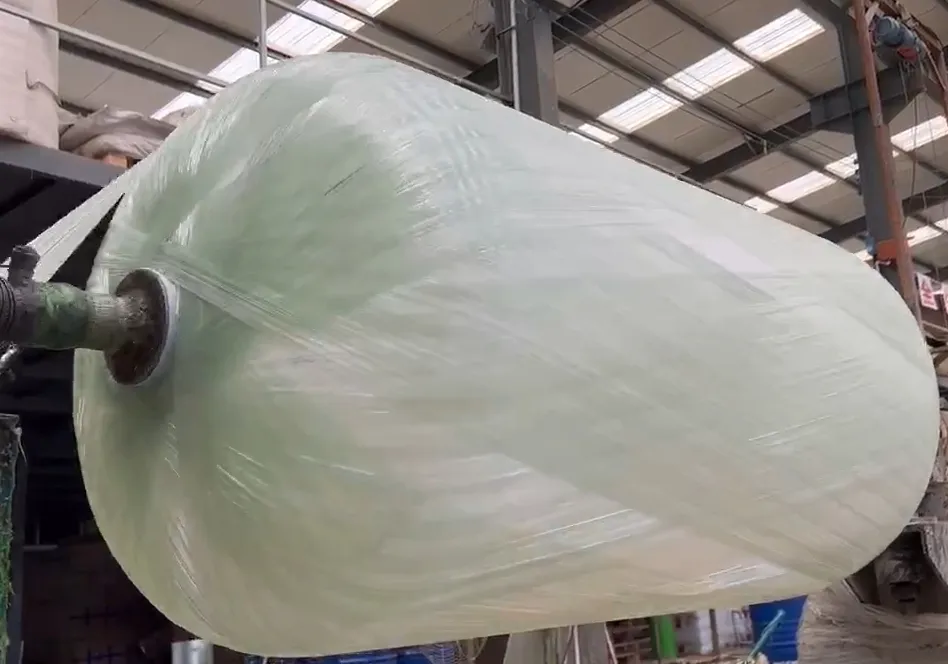loading...
- No. 9, Xingyuan South Street, Dongwaihuan Road, Zaoqiang County, Hengshui, Hebei, China
- admin@zjcomposites.com
- +86 15097380338
- Welcome to visit our website!
frp vessels
Understanding FRP Vessels A Comprehensive Overview
Fiber-Reinforced Plastic (FRP) vessels are increasingly becoming a vital component in various industries due to their exceptional strength-to-weight ratio, corrosion resistance, and versatility. These composite materials, often crafted from a combination of glass fibers and polymer resins, offer significant advantages over traditional materials like steel or concrete, particularly in environments subject to harsh conditions.
One of the primary benefits of FRP vessels is their resistance to corrosive substances. In many industries, such as chemical manufacturing and water treatment, equipment is frequently exposed to aggressive chemicals. Traditional materials can degrade over time when interacting with such substances, leading to costly repairs and downtime. FRP vessels, however, maintain structural integrity even in challenging environments, making them a reliable choice for storage and transport of chemicals.
Understanding FRP Vessels A Comprehensive Overview
The manufacturing process of FRP vessels also allows for greater flexibility in design. Engineers can create vessels in various shapes and sizes to meet specific application requirements, a feat that is often more challenging with conventional materials. Additionally, the ability to produce custom molds enables manufacturers to provide tailored solutions that can adapt to unique operational needs, further enhancing their usability in specialized applications.
frp vessels

Moreover, FRP vessels are environmentally friendly. The production processes are generally less energy-intensive compared to metals, and their longevity reduces the frequency of replacement, minimizing waste. As industries increasingly prioritize sustainability, the demand for eco-friendly materials like FRP is surging.
In terms of safety, FRP vessels also stand out. Unlike metal containers that can corrode and develop leaks over time, FRP offers a robust barrier that greatly reduces the risk of spills and environmental contamination. This trait, combined with the ability to withstand high pressures and temperatures, ensures that FRP vessels are as safe as they are reliable.
As technology continues to evolve, innovations in FRP materials are emerging, promising even greater durability and performance. Research into advanced fiber types and resin formulations is continuously enhancing the capabilities of FRP vessels, positioning them as an increasingly attractive option for various applications.
In conclusion, FRP vessels represent a pivotal advancement in material science, offering significant advantages in terms of durability, weight, design flexibility, environmental impact, and safety. As industries look for solutions that not only meet but exceed modern-day demands, FRP vessels stand out as a sustainable and effective choice that is likely to shape the future landscape of storage and transportation.
-
GRP Structures: The Future of Lightweight, High-Performance EngineeringNewsJun.20,2025
-
FRP Water Tank: High-Performance Storage for Corrosive and Clean Water SystemsNewsJun.20,2025
-
FRP Square Tube: The New Industry Standard for Chemical and Structural ApplicationsNewsJun.20,2025
-
FRP Pultruded Profiles: The Ultimate Choice for Lightweight Structural StrengthNewsJun.20,2025
-
FRP Handrails: The Safer, Smarter, and Stronger Choice for Modern InfrastructureNewsJun.20,2025
-
FRP Grating: The Smart Solution for Durable, Lightweight Industrial FlooringNewsJun.20,2025
-
Why Choose a Galvanized Water Tank for Your Storage NeedsNewsMay.21,2025
